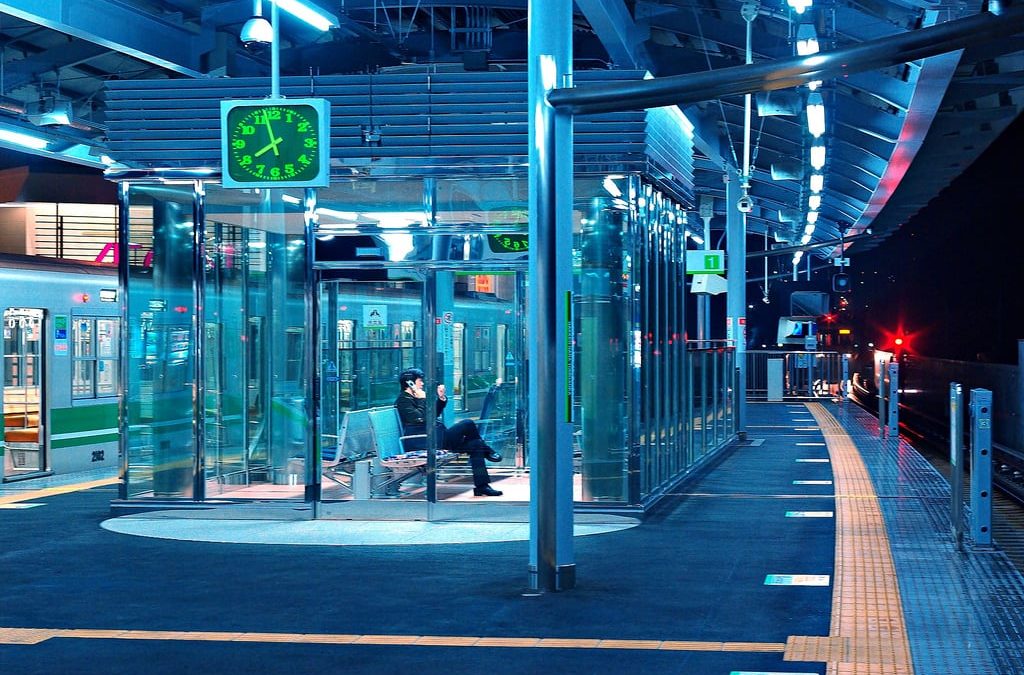People committing suicide by stepping in front of a train is real problem for railways and their staff.
Speaking to train drivers I was told that “virtually all drivers will experience this issue in their train driving career, some multiple times”.
The consequence’s are really concerning, not only the distress on of the persons family, but the impact on railway staff can cause mental scaring for years to come.
I had a relative who drove the Central Line in London, he had three in a week. He was a WW2 veteran and must have seen sights we would rather not know about, yet this experience made him claustrophobic unable to drive the underground again.
When a suicide happens the train has to be taken out of service and the station closed while the Emergency staff start a clearing up operation. This undoubtably causes disruption for both passengers and staff. The cost of each suicide also has a massive financial impact on the service costing over £125,000 every time.
In 2000 – 2013 Japan Tokyo Metro started an experiment using blue lights. Whilst there was no science to explain this concept there were claims of an 84% reduction in the suicide rate. They concentrated on the hot spots at first with intersting results. Stations without blue lights nearby didn’t see and increase. (SEE refernces below)
More recent studies show that the lighting is only effective at night so the figure is more like 40%.
Overall suicide rates have definitely declined, the concept of using blue or very bright lighting has had a measured impact. There is also a move by railways to install gating however this is very expensive and possible only viable on new stations or very busy platforms.
So why Blue Light. It appears blue light or light with a 6500 Kelvin, which is white light with a blue tint reduces Melatonin produced by the brain. We already understand that LED screens before you retire for bed will stop you sleeping because they stop the production of Melatonin. May people take Melatonin when they have long flights to help them sleep on the flight.
There are signs of hope, with the overall number of suicides falling since 2003, when 34,500 suicides were reported, down to 21,000 in 2017, a reduction of almost 40%. However, the number has been rising among young people, which shows there’s still a great need to look at a range of solutions that will combat a tremendously sad loss of life
Reference documents
Tetsuya Matsubayashi 1, Yasuyuki Sawada 2, Michiko Ueda 3
Background: Installing physical barriers at suicide hotspots is known as an effective strategy for suicide prevention. However, the effectiveness of physical barriers may be nullified by the substitution phenomenon, i.e., that restricting access to a particular place induces people at risk to look for a nearby place for suicide.
Methods: This study tests whether the substitution phenomenon exists in the case of railway and metro suicides. We focused on the prevention effort by a Japanese railway company that installed blue light-emitting-diode (LED) lamps on railway platforms to prevent people from diving to a running train. Using panel data of 71 train stations between 2000 and 2013, we compared the number of suicides before and after the installation of the blue lights at 14 stations where the lights were
installed and at neighbouring five stations on the same railway line, using the number of suicides at all other stations without the intervention as a control group.
Findings: Our regression analysis shows that the introduction of blue lights decreased the number suicides by 74% (CI: 48-87%) at stations where the blue lights were installed, while it did not result in a systematic increase in the number of suicides at the neighbouring stations.
Interpretation: The installation of blue lights generated no systematic substitution phenomenon at nearby stations.
Japan; Prevention; Railway and metro suicide.
Matsubayashi T, Sawada Y, Ueda M.J Affect Disord. 2013 May;147(1-3):385-8. doi: 10.1016/j.jad.2012.08.018. Epub 2012 Sep 11.PMID: 22980401
Ichikawa M, Inada H, Kumeji M.J Affect Disord. 2014 Jan;152-154:183-5. doi: 10.1016/j.jad.2013.09.006. Epub 2013 Sep 14.PMID: 24074716
Ueda M, Sawada Y, Matsubayashi T.J Affect Disord. 2015 Jun 1;178:1-4. doi: 10.1016/j.jad.2015.02.017. Epub 2015 Mar 2.PMID: 25770476
Mishara BL, Bardon C.J Affect Disord. 2016 Mar 15;193:215-26. doi: 10.1016/j.jad.2015.12.042. Epub 2015 Dec 29.PMID: 26773913 Review.
Havârneanu GM, Burkhardt JM, Paran F.
